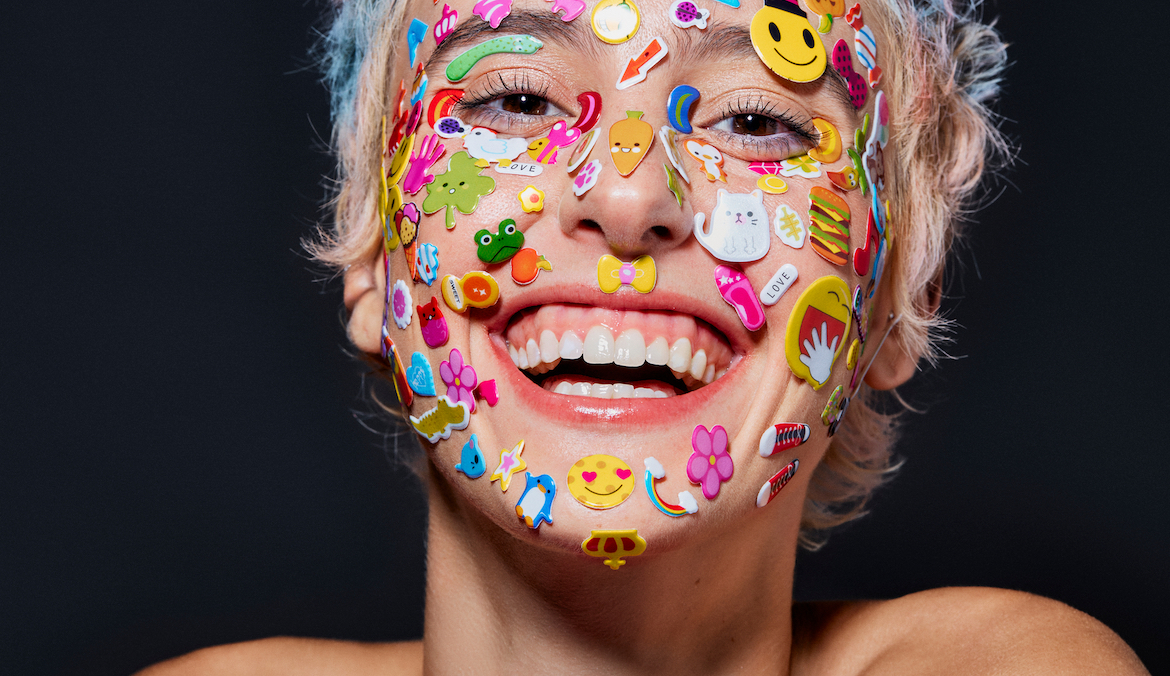Being someone with a vested interest, I had to get to the bottom of exactly what pimple patches did post-application or if I should rely on traditional spot treatments instead. So, I spoke to some real-deal acne and skin experts to break it all down. Do pimple patches work? Let’s find out.
What are pimple patches?
These acne-fighting patches are small circular hydrocolloid sheets that stick to the skin. A hydrocolloid dressing is a type of wound bandage that draws out gunk within pores without irritating the surrounding skin. So when placed on a zit, they’re similar to a sponge. “They work by absorbing excess fluid, which pulls oil and dirt away from the lesion,” says Hadley King, MD, FAAD, an NYC-based board certified dermatologist. “While stuck to the skin, acne patches also have the added benefit of preventing you from picking or trying to pop the pimple, which decreases inflammation and speeds up the healing time.” When patches contain active ingredients like salicylic acid, tea tree oil, aloe vera and other anti-inflammatory ingredients, they’re called zit stickers. Both types of patches create a barrier between an active flare-up and your hands, so the pimple is less likely to become further inflamed, leading to an infection or scar.
When to use a pimple patch
Whether your sticker of choice is star-shaped or clear, to truly benefit from it, you need to use it on the right type of breakout. Acne patches are most effective for treating open lesions, which provide an easy pathway for the gunk to ooze out. They’re also good for superficial, surface-level breakouts such as small whiteheads and pustules, says Michael Garner, MD, a dermatologist on the board of advisors at Matter of Fact. “These types of breakouts have a visible white or yellowish head and are caused by clogged pores.”
You can apply a zit sticker any time of day, but placing them on before bed works best to ensure you get a good eight hours of wear. If you don’t like sleeping with them on (because half the time, they end up on your sheets) a good rule for daytime removal is to see if the patch has turned white. That’s a visual signal it’s done its job and pulled out the excess fluids. “You may notice your sticker turns white even if your pimple didn’t pop because it’s actively working to maintain the moist environment and protect the wound or blemish,” Dr. Garner says.
When *not* to use a pimple patch
Zit stickers should really be only used for minor flare-ups that produce five or fewer spots. If a breakout is more widespread and consists of deep and stubborn cystic pimples, you need a traditional formulated spot treatment. “[Look for] more potent concentrations of active ingredients, such as benzoyl peroxide, salicylic acid, or retinoids which work to clear the pores and reduce the swelling,” explains David Petrillo, a Nevada cosmetic beauty chemist and the founder of Perfect Image. These types of breakouts need strong actives to penetrate the skin and work beneath the surface to address underlying issues, which is impossible to do with patches. (Dr. Garner does agree that a zit sticker layered over a spot treatment can provide additional protection and absorption “by helping the formula to stay in place and prevent them from being inadvertently wiped or washed away.”)
Ingredients to consider when shopping for pimple patches
People with sensitive skin and mild breakouts should opt for hydrocolloid patches without actives that can exacerbate their acne. If your skin can tolerate the use of potent ingredients, reach for these actives, says Dr. King: “Salicylic acid and tea tree oil to kill bacteria for early stage zits and cysts; and niacinamide or kojic acid for post-cystic dark spots because it’ll combat hyperpigmentation, restore your lipid barrier, and slow melanin production.”
The bottom line
Acne varies so much from person to person that it’s impossible to apply a one-size-fits all approach to treating it. Dr. Garner says it’s nothing to stress about, but rather a trial-and-error process to determine what works for your skin. If you’re using patches and notice no change, they’re probably ineffective for your skin due to them due to their occlusive nature. “They create a physical barrier and any substance that creates occlusion is referred to as being comedogenic—meaning that it has the potential to clog or block pores, leading to the formation of comedones, which are non-inflammatory acne lesions such as blackheads and whiteheads,” he says.
Instead, you should take a more comprehensive approach and rely on spot treatments that eliminate the root cause under the skin’s surface. But if physical manipulation is a bad habit of yours, from picking to popping, zit stickers are a great solve as they serve as a reminder to not touch the active breakouts, which allows them to heal and avoid scarring. Now you know.
Stay connected with us on social media platform for instant update click here to join our Twitter, & Facebook
We are now on Telegram. Click here to join our channel (@TechiUpdate) and stay updated with the latest Technology headlines.
For all the latest Education News Click Here

